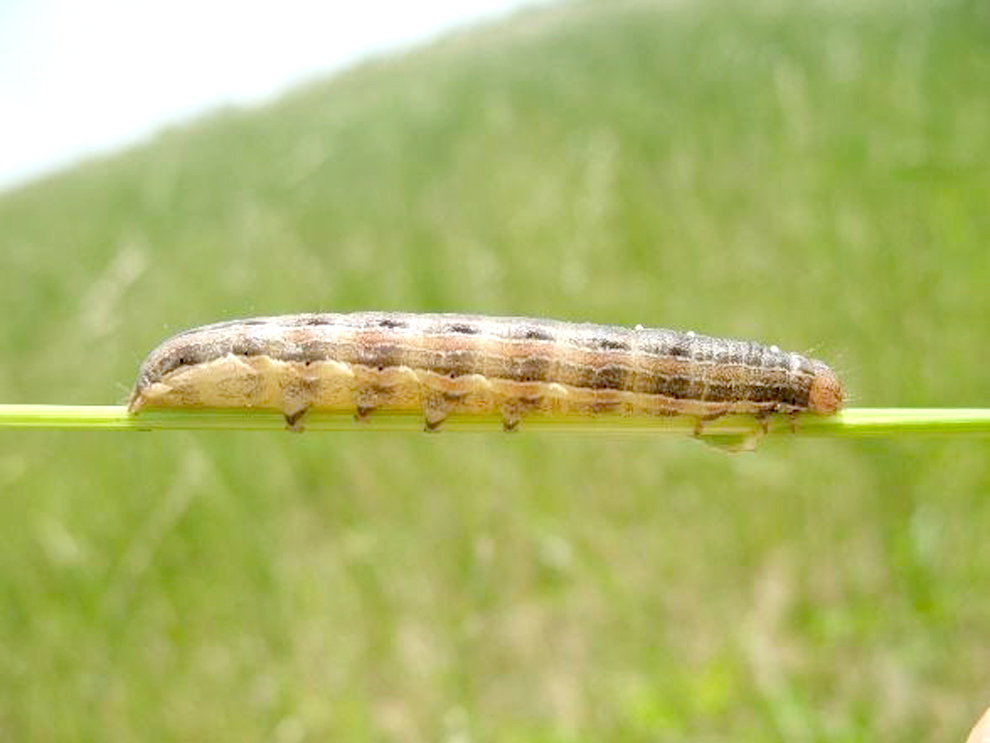True Armyworm
Pseudaletia unipuncta

Armyworm larva.
True armyworm larvae reach 1½ to 2 inches long as they approach maturity. The head capsules have honeycomb-like markings, and the body lacks any obvious hairs. Overall body coloration is variable, but is usually some shade of greenish-black with two alternating dark and orange stripes running lengthwise down each side, plus a light or faint white line on the back. Adults frequently deposit their eggs in lush grass, often in low-lying areas on wheat or pasture ground. Field margins or fields with dense growths of grassy weeds also are preferred egg-laying sites. Problems develop when the larvae consume the grass, or the grasses (or mature wheat) dry down, forcing the larvae move into neighboring corn to survive. Problems with this insect are associated with reduced tillage — especially if control of grassy weeds is inadequate. Later season damage is very characteristic: larvae work their way up the plant, removing all the leaf tissue except for the midrib. Larvae may be attacked by parasitic wasps; large numbers of small white cocoons near dried larval bodies are indicative of parasitism. Treatment is justified only when larvae are less than 1¼ inches long and present on 30% of plants with five to six extended leaves, or when 75% of plants have one or more larva per plant. There is risk of yield loss if defoliation during reproductive stages approaches the ear zone before hard dent. Lower thresholds may apply if the plants are subject to additional stresses.
Please refer to the most recent version of the Corn Insect Management Guide for treatment options.
Page last updated 3/29/2024 by J.P. Michaud.